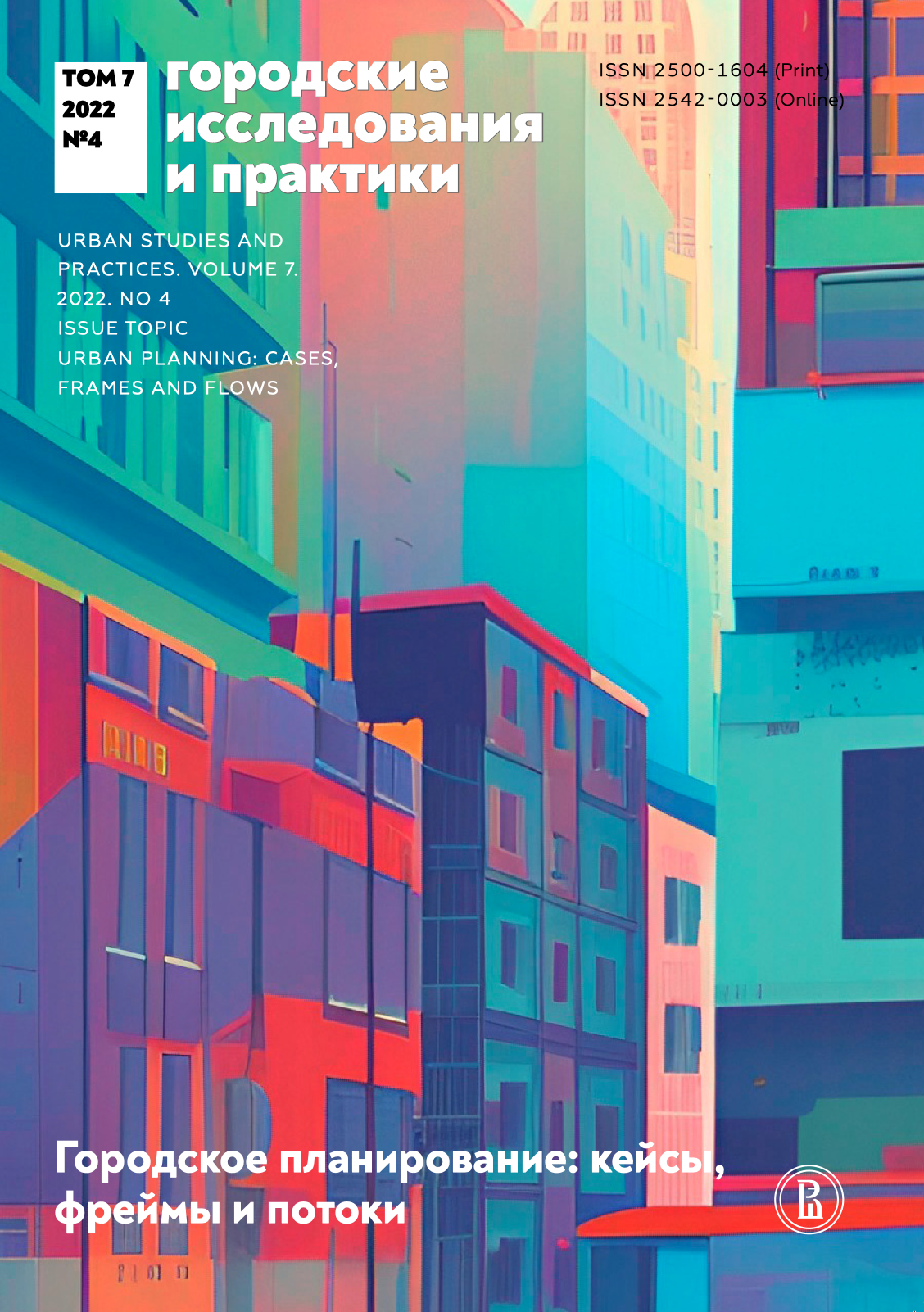Переосмысление города: соединение формы и потоков
Аннотация
Неудержимый рост экологических ограничений требует принципиально пересмотреть городской образ жизни и потребление природных ресурсов, особенно потребление энергии. Современные технические решения позволяют повысить энергоэффективность зданий и предотвратить или уменьшить их отрицательное воздействие на окружающую среду. Однако эти решения должны быть частью более глобального процесса планирования, который направлял бы городскую структуру и поведение жителей в сторону более эффективных моделей.
Скачивания
Литература
Adolphe L. (2001) A simplified model of urban morphology: Application to an analysis of the environmental performance of cities // Environment and Planning B: Planning and Design. Vol. 28. No. 2. P. 183–200.
Ali-Toudert F., Mayer H. (2006) Numerical study on the effects of aspect ratio and orientation of an urban street canyon on outdoor thermal comfort in hot and dry climate // Building and Environment. Vol. 41. No. 2.
Arnfield A. J. (1990) Street design and urban canyon solar access // Energy and Buildings. Vol. 14. No. 2. P. 117–131.
Brown G. Z., Dekay M. W. (2001) Sun, Wind and Light: Architectural Design Strategies. New York: John Wiley and Sons.
Cheng V., Steemers K., Montavon M., Compagnon R. (2006) Urban Form, Density and Solar Potential. 1–6 September. Available at: [www.unige.ch/cuepe/html/plea2006/Vol1/PLEA2006_PAPER904.pdf](http://www.unige.ch/cuepe/html/plea2006/Vol1/PLEA2006_PAPER904.pdf).
Compagnon R. (2004) Solar and daylight availability in the urban fabric // Energy and Buildings. Vol. 36. No. 4. P. 321–328.
Densité et formes urbaines dans la métropole marseillaise (2005) Ed. C. Brunner, F. Roustan. Marseille: Imbernon.
Givoni B. (1989) Urban design in different climates // World Meteorological Organisation. WMO/TD 346. Geneva: WMO.
Golany G. S. (1996) Urban design morphology and thermal performance // Atmospheric Environment. Vol. 30. No. 3. P. 455–465.
Groleau D., Marenne C. (1995) Environmental specificities of the urban built forms // Rebuild Network Conference. Rebuild—Rebuilding in the European City: Integration of Renewable Energies in Established Urban Structures. Corfu, Greece.
Mills G. (1999) Urban climatology and urban design // Proceedings of the 15th International Congress of Biometeorology and the International Conference on Urban Climatology. Heidelberg: Springer.
Oke T. R. (1988) Street design and urban canopy layer climate. Energy and Buildings. Vol. 11. No. 1–3. P. 103–113.
Okeil A. (2004) In search for energy efficient urban forms: The residential solar block // Proceedings of the 5th International Conference on Indoor Air Quality, Ventilation and Energy Conservation in Buildings. Toronto, Canada.
Olgyay V. (1963) Design with Climate: Bioclimatic Approach to Architectural Regionalism. Princeton, NJ: Princeton University Press.
Ratti C., Richens P. (2004) Raster Analysis of urban form // Environment and Planning B: Planning and Design. Vol. 31. No. 2. P. 297–309.
Ratti C., Baker N., Steemers K. (2005) Energy consumption and urban texture // Energy and Buildings. Vol. 37. No. 7. P. 762–776.
Ratti C., Raydan D., Steemers K. (2003) Building form and environmental performance: Archetypes, analysis and an arid climate // Energy and Buildings. Vol. 35. No. 1. P. 49–59.
Salat S. (2009) Energy loads, Co2 emissions and building stocks: Morphologies, typologies, energy systems and behaviour // Building Research and Information. Vol. 37. No. 5–6. P. 598–609.
Salat S. (2006) The Sustainable Design Handbook China. High Environmental Quality Cities and Buildings. Paris: CSTB-Hermann.
Santamouris M. (2001) Energy and Climate in the Urban Built Environment. London: James and James.
Suzuki H., Dastur A., Moffatt S., Yabuki N. (2009) Eco2 Cities, Ecological Cities as Economic Cities. Washington, DC: World Bank.
Traisnel J.-P. (2001) Habitat et développement durable, bilan rétrospectif et prospectif // Les Cahiers du CLIP. Vol. 13. No. 4. P. 7–72.

